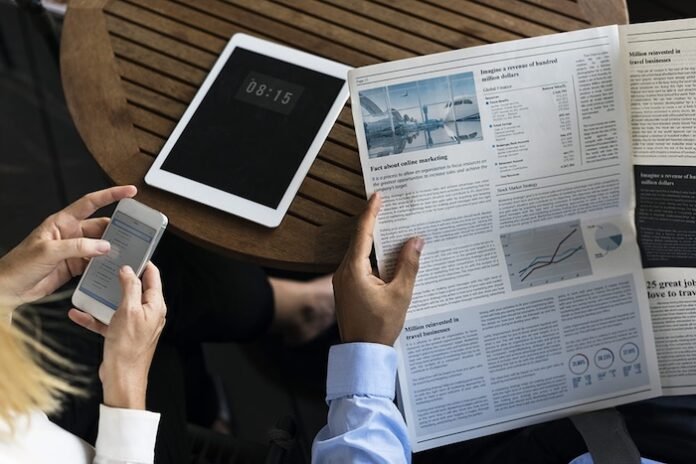India’s advertising market logged a compound annual growth rate of 6-7% over the past five fiscals and crossed the Rs 1 lakh crore mark last fiscal. Digital advertising emerged as the fastest-growing segment, accounting for 45-46% of the total ad spend, up from 24% in fiscal 2020, while print media struggled, says Crisil Intelligence.
This fiscal, the gap between traditional and digital media is expected to widen, with the latter likely to grow 9-11%, while traditional media flatlines. This signals an ongoing transformation in how India has been consuming content. In fiscal 2020, traditional media, such as television (TV) and print, held nearly 65% market share, which dropped to 46-47% last fiscal.
The TV industry is under attack from two flanks – broadcasters are losing ad revenue as viewers shift to over-the-top (OTT) platforms and distribution networks are losing subscribers to optic fiber-based services. The direct-to-home industry alone lost over 10 million subscribers between December 2020 and 2024.
The print media is grappling with stagnant circulation, rising preference for digital news applications and a clear shift of advertisers towards digital platforms. Overall readership fell ~500 basis points between fiscals 2020 and 2025.
Pushan Sharma, director, Crisil Intelligence, says, “The shift is evident in the ad spend patterns of major consumer-facing sectors such as fast-moving consumer goods (FMCG), automobiles and e-commerce. FMCG companies now allocate 55-60% of their ad budgets to digital, up from ~30% in fiscal 2020. This includes content creator collaborations, targeted ads and other digital formats. Automobile companies have also increased their digital ad spends to 35-40% in fiscal 2025, compared with 15-20% in fiscal 2020. Similarly, for e-commerce players, digital channels now account for up to 60% of ad spends.”
In fiscal 2020, digital spend majorly went into search, which had 40-42% share, and social media, which had 31-33%. YouTube accounted for 10-12% and the rest went to OTTs and other platforms.
By last fiscal, the share of social media had grown to 40-45%, powered by creator-led content and the rise of short-form videos. The share of YouTube rose to 20-22% on widespread reach across urban and rural India, easy access across devices, pre-installed presence on smartphones and availability of free content supported by ads.
The remaining share went to OTT platforms, music apps, digital news, and search. As users turned to visual and influencer-led formats for product discovery, the share of search dipped 5-6 percentage points reflecting a shift towards a mature and diverse ecosystem.
Says Elizabeth Master, associate director, Crisil Intelligence, “This shift is closely linked to India’s digital evolution. Smartphone users rose to 700 million in 2024 from 500 million in 2019. Mobile data in India is among the cheapest in the world, averaging just $0.16 per gigabyte (GB), compared with $2.50 globally. Average daily screen time has increased to over five hours a day from four in 2019, with OTT and social media accounting for ~60% of it. A growing share of time is spent on passive browsing of short-form videos or trending content, highlighting the ongoing shift to instant, immersive formats without deep engagement.”
Looking ahead, the trend in ad spend appears irreversible as traditional players are also stepping up on digitalization. Digital platforms offer sharper targeting, a micro-market approach and better cost efficiency. Creator-led content also brings higher engagement and relatability, making digital outreach more effective and measurable. As a result, brands are steadily moving towards digital-first strategies, marking a shift in India’s advertising landscape.
However, India is yet to fully benefit from this shift. A large share of the digital spends, particularly on social media, goes to platforms owned by foreign companies such as Meta and Google. Thus, there is a case to build and support domestic digital platforms to retain greater value within the country and ensure India plays a more active role in shaping its digital future.
















